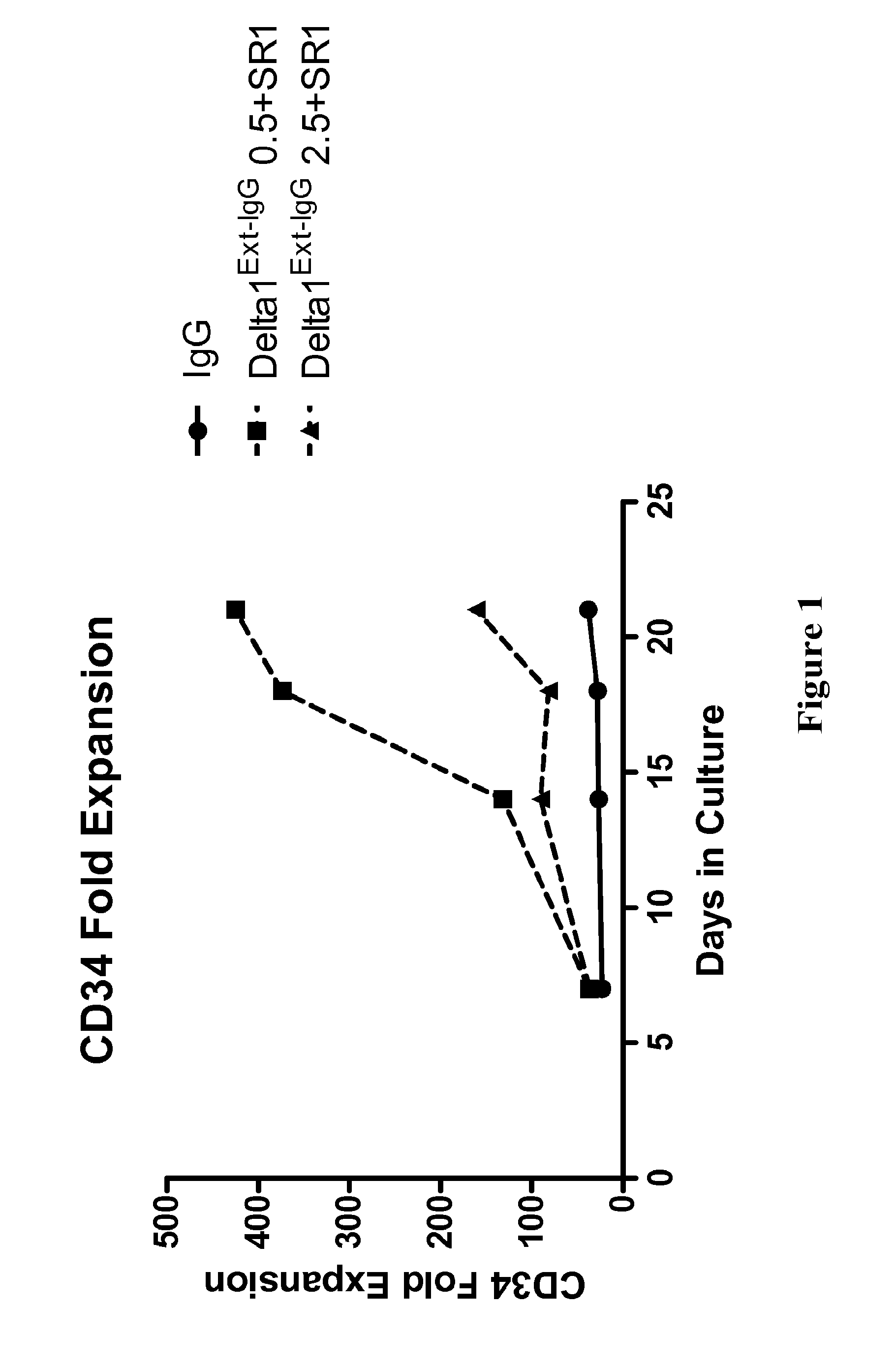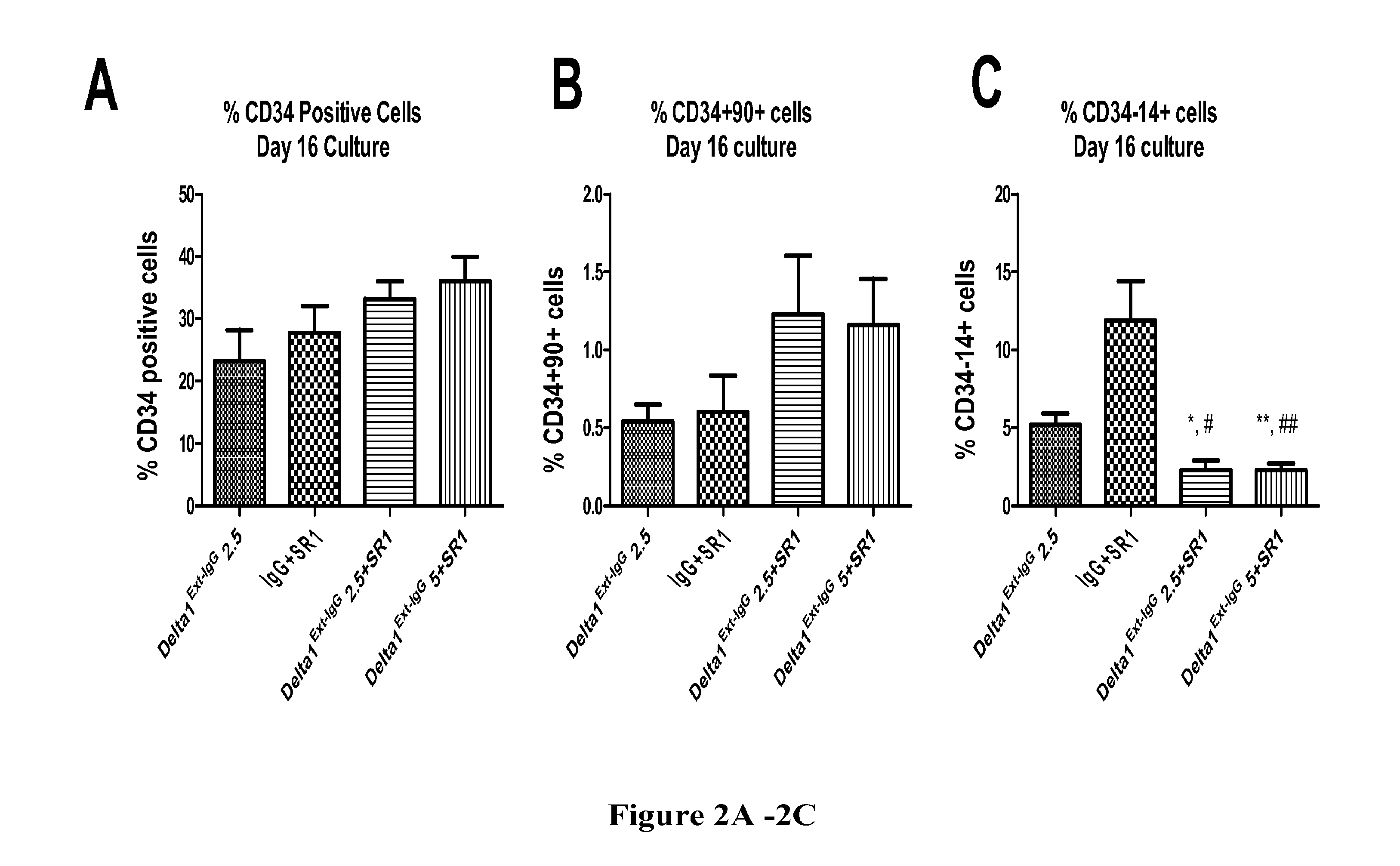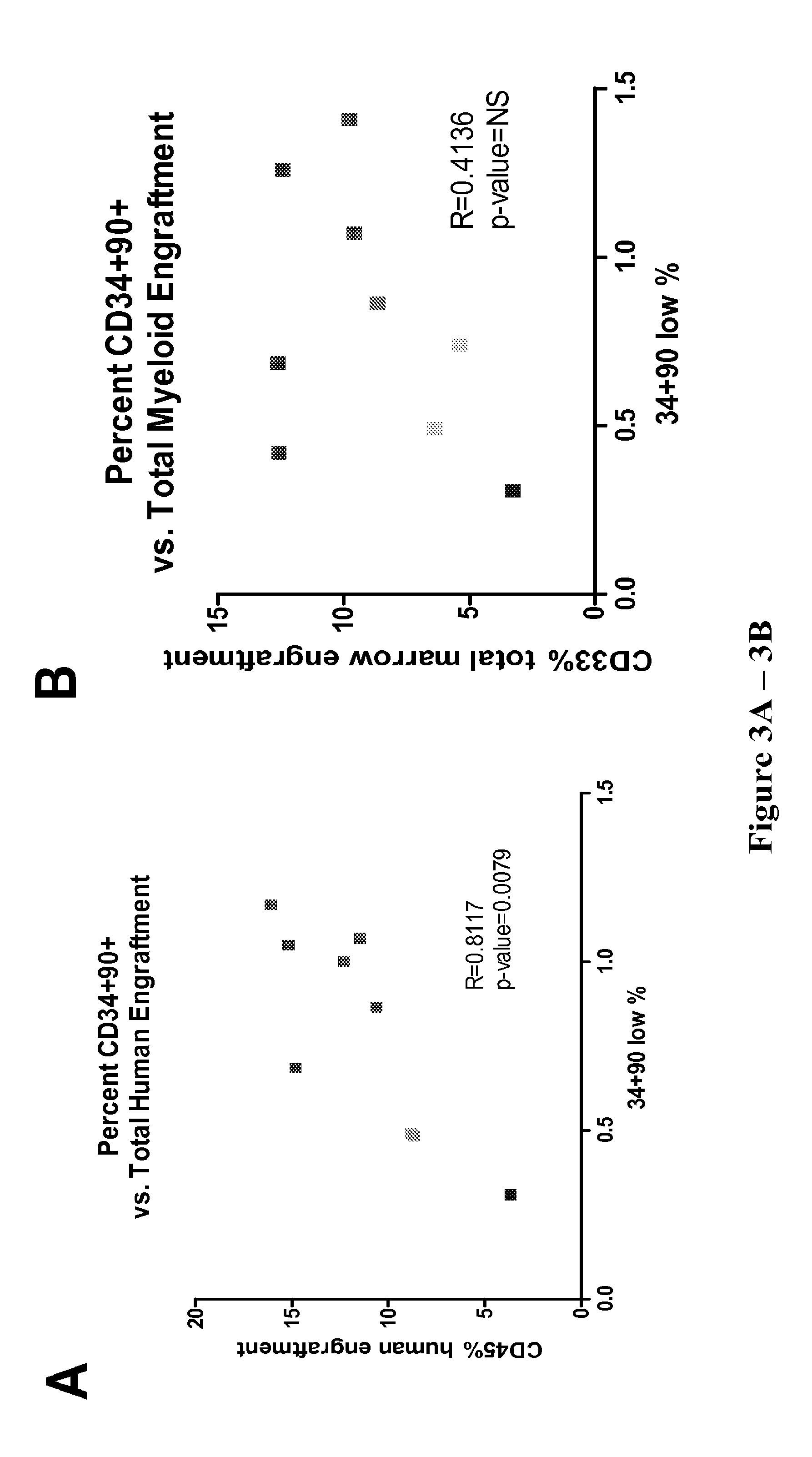Compositions and methods for enhanced generation of hematopoietic stem/progenitor cells
a technology compositions, applied in the field of methods, kits and compositions for expansion of hematopoietic stem/progenitor cells, can solve the problems of increasing morbidity and mortality, significant infection risk, and clinical limitations of the number of available hsc for treatment, so as to enhance the generation of short-term in vivo repopulating cells and enhance the generation of multi-lineage long-
- Summary
- Abstract
- Description
- Claims
- Application Information
AI Technical Summary
Benefits of technology
Problems solved by technology
Method used
Image
Examples
example 1
7.1 Example 1
Delta1ext-IgG and SR-1 in Combination Expand CB HSPC Ex Vivo
[0414]This example shows that the combination of a Notch agonist and an aryl hydrocarbon receptor antagonist, specifically the combination of Delta1Ext-IgG and SR1, is effective to expand CD34+ CB HSPC ex vivo.
[0415]Both Delta1Ext-IgG and SR1 have been previously shown to generate CD34+ CB HSPC ex vivo as compared to cytokine-containing control (see Boitano et al., 2010, Science 329(5997): 1345-1348; Ohishi et al., 2002, J Clin Invest. 110(8): 1165-1174; Delaney et al., 2005, Blood 106(9): 2693-2699).
[0416]To determine whether Delta1Ext-IgG and SR1 in combination were successfully able to expand CD34+ CB HSPC ex vivo, CD34+ cell generation, an HSPC enriched population routinely used in clinical application, was assessed at multiple time points in culture as compared to IgG control. CD34+ CB progenitors were isolated by bead selection and Automacs and then cultured for 21 days in StemSpan serum-free expansion me...
example 2
7.2 Example 2
Delta1ext-IgG and SR-1 in Combination Maintain CB HSPC with More Immature Phenotype Ex Vivo
[0417]This example shows that expansion of HSPC in the presence of the combination of a Notch agonist and an aryl hydrocarbon receptor antagonist, specifically Delta1Ext-IgG and SR1, leads to an increase in HSPC-enriched cell population (CD34+ cells), an increase in cells capable of generating long-term engraftment (CD34+CD90+ cells), and a decrease in differentiated myeloid cells that have lost multi-potent repopulation capacity (CD34−CD14+cells).
[0418]The phenotype of cells expanded ex vivo in the presence of Delta1Ext-IgG, SR1, or the combination was evaluated to determine how the combination of these agents affected generation of CD34+ and CD34+CD90+ CB HSPC. The CD34+ cell population has previously been shown to be enriched for HSPC based on the presence of both long-term culture initiating cells (LTC-IC) and cells capable of sustained long-term in vivo repopulation (see Srou...
example 3
7.3 Example 3
Maintenance of CD34+CD90+ Cells Ex Vivo Correlates with in Vivo Engraftment
[0420]This example shows that maintenance of the CD34+CD90+ cell phenotype correlates with improved in vivo repopulating ability of CB HSPC expanded in the presence of a combination of a Notch agonist and an aryl hydrocarbon receptor antagonist (Delta1Ext-IgG and SR1).
[0421]Cells were cultured as described above and transplanted into sublethally irradiated immunodeficient NSG mice. Total human engraftment was defined as percent of human CD45+ murine CD45.1− cells based on bone marrow aspirate at 2 weeks post-transplant. Total myeloid engraftment was defined as percent human CD45+CD33+ murine CD45.1 cells on bone marrow aspirate at the same time point. Then, mean engraftment for six mice per group was compared to the percent CD34+CD90+ cells infused at time of transplant (FIG. 3). Total human engraftment correlated significantly with percent CD34+CD90+cells infused at time of transplant (R=0.8117,...
PUM
 Login to View More
Login to View More Abstract
Description
Claims
Application Information
 Login to View More
Login to View More - R&D
- Intellectual Property
- Life Sciences
- Materials
- Tech Scout
- Unparalleled Data Quality
- Higher Quality Content
- 60% Fewer Hallucinations
Browse by: Latest US Patents, China's latest patents, Technical Efficacy Thesaurus, Application Domain, Technology Topic, Popular Technical Reports.
© 2025 PatSnap. All rights reserved.Legal|Privacy policy|Modern Slavery Act Transparency Statement|Sitemap|About US| Contact US: help@patsnap.com



